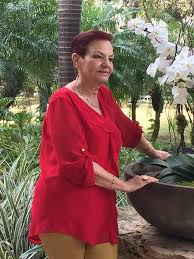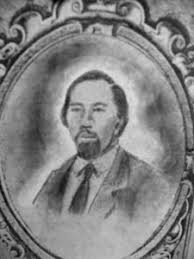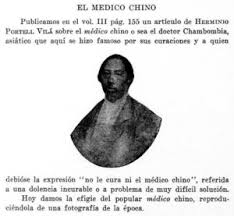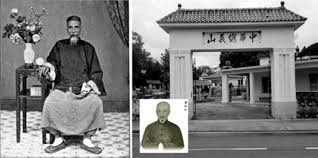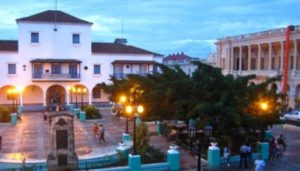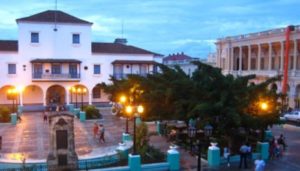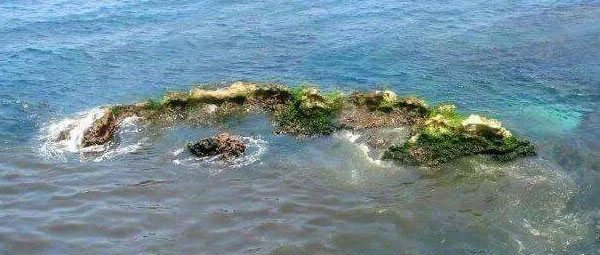BLANCA ROSA GIL, “LA MUÑEQUITA QUE CANTA”. SU FRUCTIFERA CARRERA MUSICAL. VIDEOS.
Blanca Rosa Gil tambien conocida como “La Muñequita que Canta” nació en Perico, Matanzas, Cuba el 26 de agosto de 1937 y fue una de las cantantes latinoamericanas más exitosas durante las décadas de 1960 y 1970, amparada por el sello Velvet.
Se ha especulado que Blanca Rosa Gil comenzó su incursión en el ambiente artístico en compañía de sus hermanas Rita y Mercedes, con quienes realizó los primero pininos de su fructífera carrera a muy cortas edad. Gil se fue de Cuba a Caracas, Venezuela con su familia en 1955.
El primer álbum de Blanca Rosa Gil, ‘Shadows’, fue grabado en Venezuela en 1957.
Todos se hacen la pregunta como siendo Cuba la cuna de la música en general, la meca donde en aquella época todos los cantantes debían pasar sus exámenes de aptitudes, como esta gran dama de la canción es descubierta en Caracas, nativa en Cuba, la llamada Perla del Caribe, es contratada para que fuera a cantar precisamente a la Habana, Cuba, a la temprana edad de aproximadamente 18 años.
Asi prácticamente comienza la vida artística de la gran Blanca Rosa Gil, quien al comenzar a trabajar se hace tan popular que es requerida por grandes cabaret, la radio y la incipiente televisión, donde sus presentaciones tienen un gran exito, lo que hace que su fama trascienda y comience, no solamente a codearse con los mejores artistas cubanos, sino a cotizarse como una de las mejores cantantes del ramo.
En 1966 grabó el bolero “Hambre”, de el mexicano Rosendo Alvarez Montiel, que pasó más de un año en las filas de popularidad, lo que significa el máximo éxito de su carrera y la canción que simboliza desde que se convirtió en una verdadera pieza de colección, Tocado de una manera única, especial y con un sentimiento extraordinario, ya que hasta ahora nadie se ha atrevido a intentar cantar esa canción de una manera similar a la gran impartida a Blanca Rosa Gil y personalizada con un sentido de vestimenta afilada y un dosis de espiritualidad.
Ella es mejor conocida por su exitosa canción ‘Te Odio Y Te Quiero’ (Mi Triumfo). Varias de sus muchas grabaciones clásicas de Bolero en álbumes de larga duración se han vuelto a publicar en un disco compacto.
Regresó a Cuba como cantante en 1962, pero posteriormente se exilió a Miami, Florida, donde vivió durante nueve años.
Blanca Rosa Gil casi se convierte en una artista nómada, ya que nació en Cuba, se instaló durante varios años en Caracas, Venezuela, también vivió en México, se instaló durante casi nueve años en Miami, EE. UU., Y finalmente eligió su residencia permanente. la hermosa isla de Borinquen.
Se casó y ha residido en ‘La Isla Borinquen’, Puerto Rico, durante los últimos 40 años. Gil se ha concentrado en el canto religioso cristiano en los últimos años, y todavía canta en las iglesias evangélicas. La música de Bolero de Gil ha experimentado un renacimiento en los últimos años debido a la reedición de sus álbumes en disco compacto y MP3, y ocasionalmente regresa al escenario para interpretar sus canciones clásicas de Bolero cubano.
En 2013, Gil apareció en concierto en el Auditorio Miami-Dade en Miami, Florida.
FILMOGRAFIA SELECCIONADA.
40 Años 40 Exitos (Fecha Desconocida)
Triunfadora de Cuba (2008)
No Soy Tu Esclava (2006)
Ayer y Hoy Con Los Montemar (2007) Blanca Rosa Gil y Los Montemar
Las Voces del Siglo (2006)
Los Años de Oro / Besos Brujos (2006)
Besos Brujos (2005)
Yo soy la buena (2003)
La Duena y El Señor del Bolero (2000)
Antologia Cuba / Blanca Rosa Gil (1999)
Besos de juegos (1999)
Tu me hiciste mujer (1998)
15 Super Exitos (1997)
Dueña y señora de la Canción (1996)
Hambre (1995)
15 Exitos (1994)
La munequita que canta (1993)
Boleros (1992) remasterizados
Unica Entrega (fecha desconocida)
 BLANCA ROSA GIL, “THE SINGING DOLL”, HER FRUIT MUSICAL CAREER. VIDEOS.
BLANCA ROSA GIL, “THE SINGING DOLL”, HER FRUIT MUSICAL CAREER. VIDEOS.
Blanca Rosa Gil also is known as “La Muñequita Que Canta” was born in Perico, Matanzas, Cuba on August 26, 1937, was one of the most successful Latin American singers during the 1960s and 1970s, protected by the Velvet label.
It has been speculated that Blanca Rosa Gil began her foray into the artistic environment in the company of her sisters Rita and Mercedes, with whom she made the first performances of her fruitful career at a very young age. Gil left Cuba for Caracas, Venezuela with her family in 1955.
Blanca Rosa Gil’s first album, ‘Shadows’, was recorded in Venezuela in 1957.
Everyone asks the question how Cuba is the cradle of music in general, the mecca where at that time all singers had to pass their aptitude tests, as this great lady of the song is discovered in Caracas, a native of Cuba, the call Perla del Caribe, is hired to go to sing precisely in Havana, Cuba, at the young age of approximately 18 years.
Thus practically begins the artistic life of the great Blanca Rosa Gil, who when she begins to work becomes so popular that she is required by large cabarets, radio, and the incipient television, where her presentations are highly successful, which makes her fame Transcend and begin, not only to rub shoulders with the best Cuban artists but to be listed as one of the best singers in the field.
In 1966 she recorded the bolero “Hambre”, by the Mexican Rosendo Alvarez Montiel, who spent more than a year in the ranks of popularity, which means the maximum success of his career and the song that he symbolizes since it became a real piece of the collection, played in a unique, special way and with an extraordinary feeling, since until now no one has dared to try to sing that song in a similar way to the great one given to Blanca Rosa Gil and personalized with a sense of sharp clothing and a dose of spirituality.
She is best known for her hit song ‘I Hate You And I Love You’ (Mi Triumfo). Several of her many classic Bolero recordings on full-length albums have been republished on compact disc.
She returned to Cuba as a singer in 1962 but later went into exile in Miami, Florida, where she lived for nine years.
Blanca Rosa Gil almost became a nomadic artist, since she was born in Cuba, settled for several years in Caracas, Venezuela, also lived in Mexico, settled for almost nine years in Miami, USA, and finally chose her permanent residence. the beautiful island of Borinquen.
She was married and has resided on ‘La Isla Borinquen’, Puerto Rico, for the past 40 years. Gil has concentrated on Christian religious singing in recent years and still sings in evangelical churches. The music of Bolero de Gil has undergone a revival in recent years due to the reissue of her CD and MP3 albums, and she occasionally returns to the stage to perform her classic Cuban Bolero songs.
In 2013, Gil appeared in concert at the Miami-Dade Auditorium in Miami, Florida.
(READ BLANCA ROSA GIL DISCOGRAPHY IN THE SPANISH SECTION)
Agencies/ Wiki/ PopurriCubano/ Internet Photos/ TouTube/ Arnoldo Varona/ www.TheCubanHistory.com
THE CUBAN HISTORY, HOLLYWOOD.









